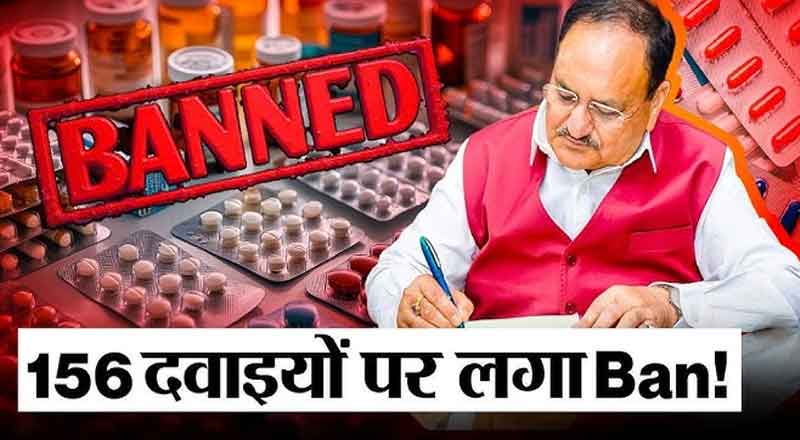On August 22, the central government imposed a ban on 156 fixed-dose combination (FDC) drugs, including popular medications used to treat fever, pain, allergies, and cold symptoms. These drugs, which combine two or more active pharmaceutical ingredients in a fixed ratio, are often referred to as “cocktail drugs.” The decision follows concerns that these combinations may pose risks to human health, with safer alternatives available.
Specific Drugs Targeted by the Ban
The Union Health Ministry’s gazette notification, issued on August 12, highlighted the prohibition of several well-known FDC drugs. Among these is the widely used pain-relief tablet ‘Aceclofenac 50mg + Paracetamol 125mg,’ which is manufactured by leading pharmaceutical companies. Other banned combinations include:
- Mefenamic Acid + Paracetamol Injection
- Cetirizine HCl + Paracetamol + Phenylephrine HCl
- Levocetirizine + Phenylephrine HCl + Paracetamol
- Paracetamol + Chlorpheniramine Maleate + Phenyl Propanolamine
- Camylofin Dihydrochloride 25 mg + Paracetamol 300 mg
Additionally, the government has banned the combination of Paracetamol, Tramadol, Taurine, and Caffeine, with Tramadol being an opioid-based painkiller.
Expert Committee’s Findings
The decision to ban these FDCs was driven by findings from an Expert Committee appointed by the Centre. The committee deemed these combinations “irrational,” citing potential risks to human health without any justifiable benefit. The government, agreeing with the committee’s recommendations, concluded that prohibiting the manufacture, sale, and distribution of these FDCs was necessary in the interest of public safety. The ban is enforced under Section 26A of the Drugs and Cosmetics Act, 1940.
The notification emphasized that allowing these drugs to remain on the market, even with regulations or restrictions, would not be justifiable given the risks involved. Thus, a complete prohibition was deemed the only appropriate action.
Historical Context and Broader Implications
This recent ban is part of a broader effort by the government to regulate and ensure the safety of pharmaceutical products in the country. In 2016, the government had already banned the manufacture, sale, and distribution of 344 FDCs, following recommendations from an expert panel set up by the Supreme Court. The panel had found that these drugs were being sold without adequate scientific data to support their efficacy and safety. Some of the recently banned FDCs were also part of this original list, reflecting ongoing concerns about their use.
In June 2023, 14 FDCs from the initial list of 344 were also banned, further underscoring the government’s commitment to addressing public health risks associated with these combinations.
This ban marks a significant step in ensuring the safety and efficacy of medications available in India, prioritizing public health over commercial interests.
(With inputs from agencies)





